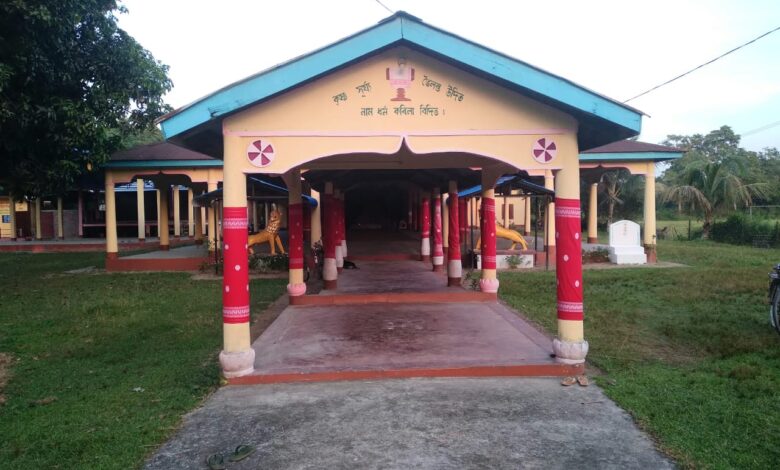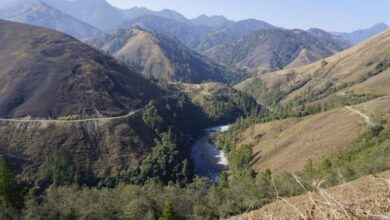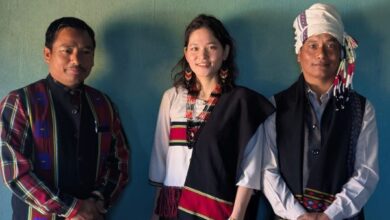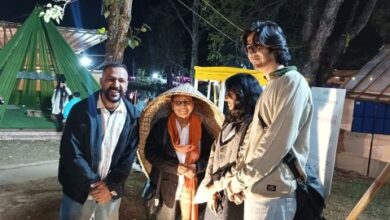Namghar: The lifeline of Assamese society
Namghar was born out of marvellous tribal architectural aspects

 The Assamese Namghar has the shadow of tribal houses — Dekachang, Morang Ghar etc. So, naturally, it has inherited the functions of these types of houses.
The Assamese Namghar has the shadow of tribal houses — Dekachang, Morang Ghar etc. So, naturally, it has inherited the functions of these types of houses.
PUBLIC PLATFORM:
The Namghar is the only public place in rural Assamese society where a person gets the first opportunity to present him or her in public. It is just like the first rehearsal house for generating human resources. Namghar grooms people in their respective fields from culture and spirituality to political leadership in the early period of life.
VILLAGE PANCHAYAT:
The introduction of the ‘Panchayati raj’ system is also unable to take over the role of Namghar in total. It may be because of its non-political permanent institutional nature. The disputes and discordances among villagers are much better settled in Namghar than elsewhere.
RURAL CLUB:
The Namghar is the only venue in rural areas of Assam where people acquaint themselves with each other in a cordial manner. Nowadays, many libraries are also constructed adjacent to the Namghar. Even many indoor games are played in the extended shed of Namghar. The Assamese Namghar serves as an auditorium, playground, religious discourse, political meeting, trial court etc.
SPIRITUAL GUARDIANSHIP:
The most important and effective feature of Namghar is its spirituality. The power of Namghar originates from common religious beliefs or weakness to spirituality or religion. It is like a church in medieval Europe. The Namghar enjoys the status of an unquestioned judge among innocent people because of its religious tag. So, sometimes its judgment authority is more than that of a government-approved legal institution.
EXPANSION OF NAMGHAR AND SATRA:
No kingdom of Assam had ruled the entire Assam. But Saint Sankardeva reached and preached everywhere.
During his long lifespan, Mahapurush Sankardeva frequently changed his locations. He earned the wrath of respective monarchs for initiating a new religious order. His main foe or enemy remained among the kingdoms of Kachari, Ahom and Koch. Sankardeva started his religious preaching from Borduwa and Alipukhuri.
The family of Sankardeva was an independent landlord. But the powerful Kachari was their neighbour. Once a quarrel erupted between them and Sankardeva was compelled to move from middle Assam to the Ahom kingdom via Singori and Routa (around 1516-1517). He finally settled in Gangmou (1527). Sankardeva stayed there for almost five years and wrote Ankiya naat Patni Prasad.
The position of the Ahom kingdom was destabilised by the attack of Koch monarch Biswa Singha. Again, the Mahapurush migrated to Dhuwahat, presently within the Majuli area. Here, he expressed himself as a mass preacher. He converted many people to ‘Ek Sarana’ and a vast group of his religious sect emerged. This rang an alarm bell for the priestly Brahmins. The Brahmins started antagonising Sankardeva and the wrong message about him reached the Ahom monarchs. Hostility arose unabated. The most remarkable event of his stay in Dhuwahat is the meeting of another great saint Madhavdeva.
After Koch king Nara Narayan rose to the throne (1540), Sankardeva got comfortable royal patronage. Even King Nara Narayan became his follower. Mahapurush Sankardeva finally settled in Patbaushi of Tantikuchi (Barpeta). But he frequented Koch Bihar and his residing place was Bheladonga.
The most formative period of Sankardeva started after he migrated to the Koch kingdom in lower Assam. His prominent Ankiya Naats and devotional songs were created in Patbaushi. Moreover, Patbaushi and Koch Bihar are the revered places that established Sankardeva as a religious icon. The disciples from various ethnic backgrounds are converted to ‘Ek Sarana’. They are Damodordeva (Brahmin), Govinda (Garo), Jayaram (Bhutia), Murari (Koch) and Chand Sai (Muslim), among others.
CHANGES IN NAMGHAR:
The Namghar is an institution created about five hundred fifty years ago. Naturally, change is inevitable with time. The religious rites and rituals are also changed in all institutions. The influence of religion in Namghar is paramount. It has been observed that the basic spirituality of Namghar hasn’t been changed. The various cultural programmes are held in Namghar but generally with religious undertones. The power of Namghar as a village panchayat or mediator is reducing. Qualified people now expect to be tried depending on circumstantial evidence for all the disputes.
The morality of Namghar matters less in serious cases. The transition from feudalism to democracy resulted in acquiring personal freedom. Even common people are involved in politics for voting rights. This was not the same in the colonial era. The beginning of the Industrial Revolution ended the agrarian economy. Government and relevant modern institutions, like the judiciary and police are slowly replacing the age-old social authority of Namghar.
The basic architectural look of the Namghar remains the same. But the non-availability of indigenous materials — bamboo, straw, timber and cane — the original structure of Namghar disappeared and the materials were replaced by concrete. So, the look and design have also changed. The masons are mostly outsiders and cannot distinguish between the Namghar and a temple. So, the triangular roof, facade, monikut and extended shed sometimes resemble Hindu temples.
PARTS OF NAMGHAR:
The inner premises of a Namghar is divided into nine parts each with a significance. The eastern part near ‘Monikut’ where ‘Guru Asana’ is kept and is regarded as the first room or head. Serially towards the west, the second one is the heart. The third one is the stomach and the fourth is the navel. The fifth and sixth are the thigh and the feet, respectively.
The second, third and fourth parts are used generally for congregational purposes. The remaining two sections remain vacant or utilised to receive devotees and guests.
The entire Namghar is demarcated into three imaginary divisions. The head is called ‘Archana Sthana’, the heart and stomach are called ‘Bandana Sthana’ and the area from fourth to sixth is called ‘Padasevana Sthana’ where devotees sit for prayer.
ROOFING:
As stated earlier, some Vaishnava scholars consider the structure of Namghar as the feet of Lord Vishnu. The shape starts from the hip of the Lord. The roof should be like the back of an elephant. According to Vaishnavite scholars, the Namghar should have three roofs — one on the top and two on the east and west sides connected to the top.
The head or horn of this elephant is the Monikut. The tail starts from the top and the triangular skin on the top is the thigh and hip. The rest of the area has two stomachs. There should not be a division on the roof for the porch. The sloping roof is revered as a female roof. The Namghar is considered Nature. This ‘Nature’ covers the inner male. The combined ‘Nature-Male’ (Prakriti and Purush) is the creator of the world, the Almighty.
Let Namghar, born out of marvellous tribal architectural aspects, flourish in the heart of every Assamese.





